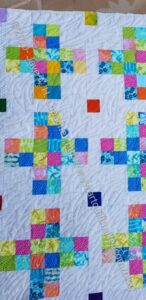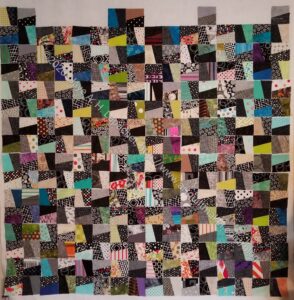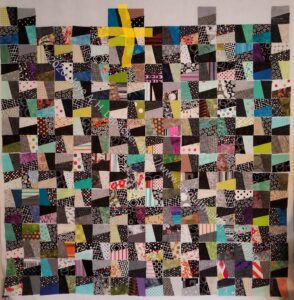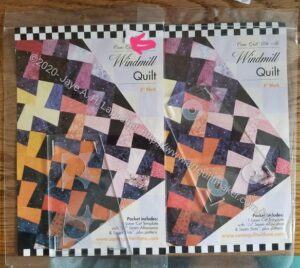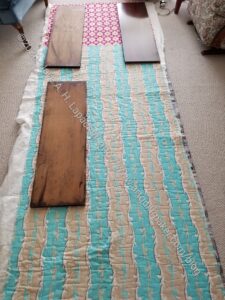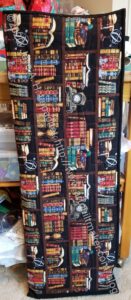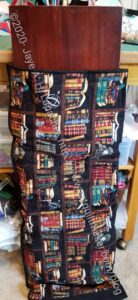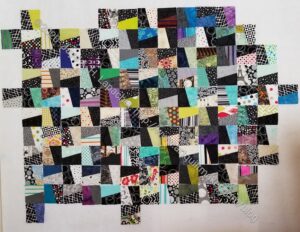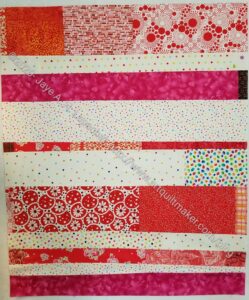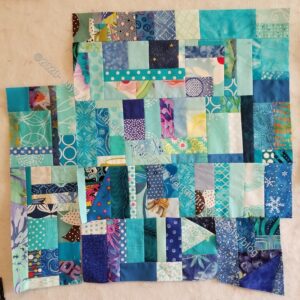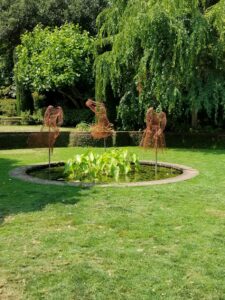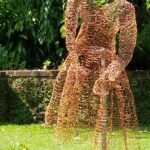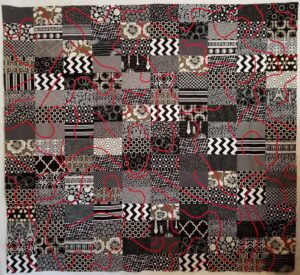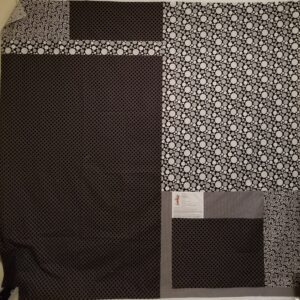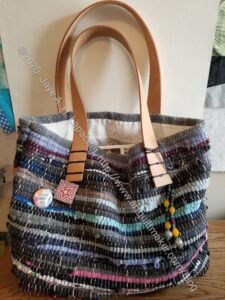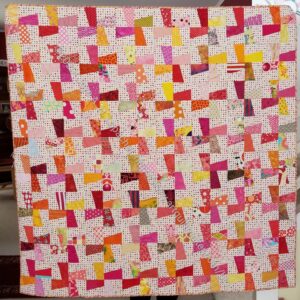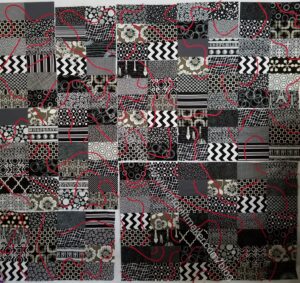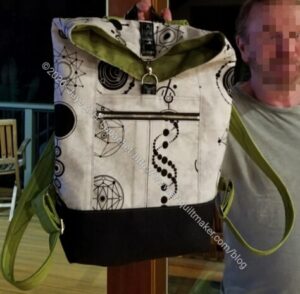I talked about this topic back in 2011 when I was asked to do a series for a podcast called Quilting for the Rest of Us. The podcast episode might still be available if you want to hear a younger Jaye talk about this topic. The companion post was more of a ‘here’s what we discussed’ rather than good information. It isn’t as useful in that format, if you can no longer listen to the podcast.
This post is an overview of design, which will go with a presentation I am planning for my guild. I am providing more information here so it is more useful if you can’t/didn’t attend the presentation.
Many quiltmakers, though not formally trained in art (e.g. an MFA in fine art) have intuitive art sensibilities. (Fearless Design for Every Quilter by Lorraine Torrence, pg.5)
Definitions:
What is design?
Design is a problem solving activity within all the arts, placing or creating subject matter so it is of visual significance and interesting to the artist. (The Quilter’s Book of Design, 2d, pg.xi)
If you think of the creation of an art piece as a hierarchy, content and form are above design. “Content implies subject matter, story, or information that the artwork seeks to communicate to the viewer. Form is purely visual aspect, the manipulation of various elements and principles of design. Content is what artists want to say; form is how they say it.” (Design Basics, Pentak & Lauer, pg.5) Design means to plan or organize. It is the opposite of change. The result is visual organization (Pentak & Lauer, pg.4).
Using Design
Hard and fast rules are impossible because of the varied objectives of visual art. Artistic practices and criteria have been developed from successful works. Guidelines (not rules) exist that usually will assist in the creation of a successful designs. (Pentak & Lauer, pg.5)
“Principles of design are the laws of designing anything! In other words, to have a good design, you should consider these principles for the best design possible. Elements of design on the other hand are things that are involved within making a design. The major difference between principles and elements is that principles are rules you have to follow and elements are things that will help you complete those rules for the best project outcome.” (Homework Help: Art: Visual Arts: Principles & Elements of Design)
Thoughts:
“A good design supports or changes how we live” – John E. B. Dubus blog post Sept 23, 2010.
Judy Martin wrote in her May 2012 newsletter ” My basic philosophy boils down to this: I try to do what’s right for the quilt, not what’s right for me. It might be easier to slap a plain border on and be done with it, but if the quilt looks better with a pieced border, that’s what I do. It might be easier to make it out of 5 fabrics, but if it looks better in scraps, that’s what I do. If it looks more refined with 1-inch logs rather than 2-inch, that’s what I do. If it looks more interesting as a queen rather than a 36-inch square wall quilt, that’s what I do.”
Good design requires practice and is the “result of a successful combination of design elements … and principles…”(Fearless Design for Every Quilter by Lorraine Torrence, pg.6)
Elements:
The elements form the ‘vocabulary‘ of the design (Wikipedia, design elements and principles).
The Elements of Design are the language of the visual arts (this quote/information came from a link that is no longer available).
The elements are components or parts which can be isolated and defined in any visual design or work of art. They are the structure of the work, and can carry a wide variety of messages (Cornell’s Introduction to the Elements of Design).
Principles:
The principles constitute the broader structural aspects of the design’s composition (Wikipedia, design elements and principles). I think off this as an architect’s conceptual drawing that gives the viewer the look and feel of the project.
The Principles are concepts used to organize or arrange the structural elements of design. Again, the way in which these principles are applied affects the expressive content, or the message of the work (Introduction to the Principles of Design).
Why Know About Design?
Knowing about design principles and elements helps refine your innate skill.
Design is a way of organizing a piece of visual work. According to the Quilter’s Book of Design, 2d by Ann Johnston, “Design is a problem-solving activity within all the arts, placing or creating subject matter so it is of visual significance and interesting to the artist.” (pg.xi). I like this definition, because it is understandable and doable. It also isn’t scary for people who have no MFA. When I think about solving a problem with my quilt, I relax about design and try to review the skills in my design toolbox. Remember, though, that “we all have personal experiences, subjective leanings, and differences in personality that make us prefer one thing to another…” (Fearless Design for Every Quilter by Lorraine Torrence, pg.57)
Concept: I use patterns why do I need to know about design?
Color is an element of design. To make beautiful quilts, you need to know about color. If you buy a kit, there may be one color you do not like and by knowing about design, you will be able to replace it successfully.
Balance is a principle of design. If your eye sees an element of the quilt as being unbalanced, then knowing about design will help you adjust it.
Concept: I do not make art quilts, why do I need to know about design principles and elements?
Negative space in fabric: “When choosing prints for a patchwork, think about how they’ll look when cut up, e.g. the ratio of background to foreground and the scale of the individual motifs. Does that small print have so much negative (empty) space that the actual print part won’t show up on half of the pieces? Is that large print so big that the pieces cut from it will look like they’re from entirely different pieces of fabric? (Elizabeth Hartman, The Practical Guide to Patchwork, pg.24).
Borders: does slapping on 4 lengths of fabric work with the design you have chosen or would a bit of piecing enhance your excellent piecing?
Books: when looking at books and evaluating whether you want to spend money on it, you can evaluate the various elements and principles of design included in the patterns of the book.
End Notes:
List of Elements and Principles of Design taken from a handout from a Liz Berg handout (class through CQFA)
Resources
“However I believe strongly that design is important. A good design supports or changes how we live. When I imagine the specifications of a perfect home for a family, one of the most important design criteria is that the home allows family members in all their uniqueness to thrive: physically, emotionally, intellectually and spiritually. Good design is experienced at these levels. Good design allows “a place for everything and everything in its place” including a place for people to nurture themselves, family members, and their greater community.” John Ethan Burke Dubus blog (sadly, the blog is no longer available, but the quote is still excellent)
**I use affiliate links and may be paid for your purchase of an item when you click on an item link in my post. There is no additional cost to you for clicking or purchasing items I recommend. I appreciate your clicks and purchases as it helps support this blog.


